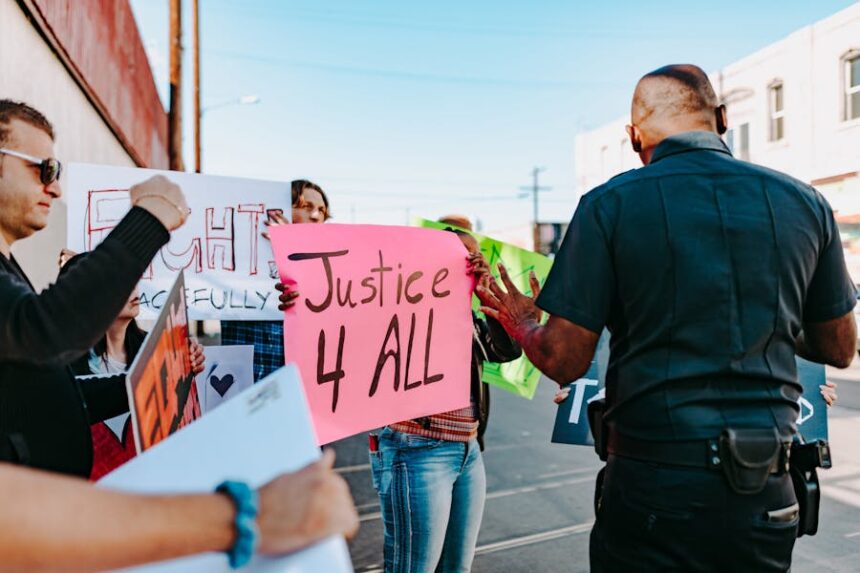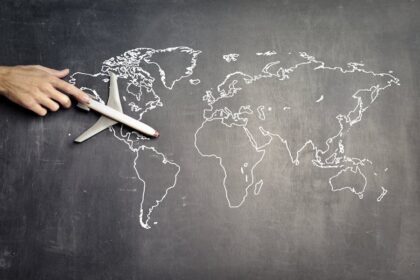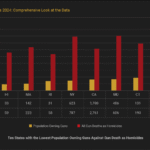In an era of political tension and democratic evolution, understanding the core differences between liberal vs illiberal democracy is essential. These two forms of governance shape how nations treat civil liberties, run elections, and balance state power with individual rights. As global politics become increasingly polarized, knowing where each system stands helps citizens, scholars, and leaders make informed decisions about the direction of governance.
- Origins and Evolution of Liberal vs Illiberal Democracy
- How Do Liberal and Illiberal Democracies Differ in Practice?
- Elections and Voter Access
- Media Freedom and Press Independence
- Judiciary and Rule of Law
- Civil Liberties and Power Structures
- Features of Liberal vs Illiberal Democracy
- The Global Impact of Illiberal Democracies
- Common Misconceptions About Liberal vs Illiberal Democracy
- Liberal Democracy Always Means Progress
- Illiberal Democracies Are the Same as Dictatorships
- Economic Success Equals Democratic Health
- Elections Guarantee Democracy
- Citizens Always Recognize Decline
- Bottom Line
- FAQ’s
Liberal democracy emphasizes individual freedoms, judicial independence, transparency, and a free press. Countries like Canada, Germany, and Sweden follow liberal democratic values. In contrast, an illiberal democracy may hold elections, but restrict press freedom, limit civil rights, and concentrate power in executive branches. Nations like Hungary, Turkey, and Russia often fall under this category.
This article explores the origins, differences, real-world examples, risks, and evolution of these political systems. With democratic backsliding being a pressing concern, the debate over liberal vs illiberal democracy is more relevant than ever.
Origins and Evolution of Liberal vs Illiberal Democracy
The historical roots of liberal and illiberal democracy stem from the same foundational idea: governance by the people. However, the trajectory of these two forms of democracy has taken markedly different turns. Liberal democracy traces its philosophical lineage back to Enlightenment thinkers like John Locke and Montesquieu, who championed the separation of powers, civil liberties, and constitutionalism. Over centuries, this system matured in Western Europe and North America, emphasizing universal suffrage, minority rights, and independent judiciaries.
On the other hand, illiberal democracy is a more recent phenomenon. It often arises in countries where democratic institutions exist in form but not in substance. These nations may hold regular elections, yet fail to uphold the liberal principles that ensure fairness and accountability. Leaders like Viktor Orbán in Hungary or Recep Tayyip Erdoğan in Turkey use populist rhetoric and majority rule to consolidate power, undermining democratic checks and balances in the process.
As globalization and economic pressures shift political dynamics, some countries backslide from liberal to illiberal models. The rise of nationalist movements, disinformation, and authoritarian populism has blurred the lines, creating hybrid regimes. Thus, the debate between liberal vs illiberal democracy is not just academic—it’s an ongoing political reality impacting millions.
Liberal democracies typically evolve with a strong legal framework that supports civil society and an active citizenry. These institutions provide resilience against authoritarian tendencies. In contrast, illiberal democracies often emerge where political culture lacks a tradition of pluralism or where elites manipulate democratic norms for personal gain.
Today, liberal democracy is challenged by declining public trust, social inequality, and political polarization. Illiberal regimes exploit these weaknesses, presenting themselves as strong alternatives. Recognizing these patterns helps us understand how both systems interact and influence global governance.
How Do Liberal and Illiberal Democracies Differ in Practice?
Liberal and illiberal democracies may both claim to follow democratic principles, but they operate very differently in real-world governance. Key contrasts emerge in how they manage elections, media, judiciary, civil liberties, and power distribution.
Elections and Voter Access
In liberal democracies, elections are typically competitive, free, and fair, with institutional safeguards that promote widespread voter access. These systems often employ independent election commissions and transparent procedures to uphold electoral integrity. In contrast, illiberal democracies may maintain the appearance of elections, but these are frequently compromised by gerrymandering, voter suppression, or the strategic use of media to skew public perception and influence outcomes.
Media Freedom and Press Independence
Press freedom is a cornerstone of liberal democracies. Journalists operate independently, investigative reporting is encouraged, and diverse viewpoints are protected. Illiberal democracies, however, tend to control media narratives through censorship, prosecution of dissenting journalists, or state-run news outlets, severely limiting access to unbiased information.
Judiciary and Rule of Law
Liberal democracies emphasize the independence of the judiciary. Courts operate autonomously and can hold government branches accountable. In illiberal systems, the judiciary is often subordinated to executive influence, undermining its ability to serve as a check on power and enforce the rule of law effectively.
Civil Liberties and Power Structures
Liberal democracies prioritize civil liberties such as freedom of speech, privacy, and assembly. Illiberal democracies may restrict these rights under the guise of preserving national security or cultural norms. Furthermore, liberal systems uphold constitutional limits and checks and balances, while illiberal regimes often centralize authority within the executive branch, weakening legislative and judicial oversight.
Features of Liberal vs Illiberal Democracy
The contrast between liberal and illiberal democracies becomes most evident when examining the structure and operation of their governing institutions. Below is a breakdown of essential features that highlight how these two systems function differently in practice.
- Free and Fair Elections
In liberal democracies, elections are transparent, competitive, and overseen by independent bodies. Voter participation is encouraged and safeguarded. In illiberal systems, elections often exist but are controlled, manipulated, or unfairly influenced by those in power. - Civil Liberties
Liberal democracies are built on the foundation of individual freedoms protected by law and upheld by strong institutions. Illiberal regimes, however, frequently curtail these rights—such as freedom of speech or assembly—in the name of state security or cultural conformity. - Media Environment
A liberal democracy promotes a diverse and independent press that holds power accountable. In illiberal democracies, media outlets are often restricted, censored, or directly controlled by the state. - Judicial System
An independent judiciary is a hallmark of liberal democracies, ensuring legal fairness and oversight. Illiberal systems feature politicized courts that often serve the interests of ruling elites. - Political Pluralism and Checks
Liberal democracies thrive on multiparty competition and checks and balances. Illiberal democracies tend to centralize authority, limiting pluralism and weakening oversight mechanisms.
The Global Impact of Illiberal Democracies
Illiberal democracies are rising in both developed and developing nations. Their emergence affects global diplomacy, trade, security, and democratic norms.
These regimes often create international instability by undermining human rights and democratic institutions. When countries like Russia or Turkey act with impunity, global governance systems suffer. Additionally, their tactics—such as disinformation campaigns and cyber attacks—can destabilize liberal democracies from within.
For citizens in these countries, life often becomes restrictive. Activists are jailed, dissent is crushed, and minority groups face systemic oppression. Even though elections occur, meaningful change remains elusive.
Moreover, illiberal regimes can influence others by exporting authoritarian tools like surveillance tech, censorship methods, and propaganda strategies. Nations looking to consolidate power often emulate these models.
Yet, resistance movements also rise. In Hungary and Poland, citizens and opposition leaders fight to preserve democratic freedoms. International organizations and watchdogs push back against authoritarian shifts. The balance between liberal vs illiberal democracy continues to shape the world order.
Common Misconceptions About Liberal vs Illiberal Democracy
Many misunderstand the nuances between liberal and illiberal democracies, often oversimplifying their strengths and weaknesses. Here are common misconceptions that distort how these systems are perceived.
Liberal Democracy Always Means Progress
While liberal democracies generally promote freedom, they are not immune to flaws like inequality, political gridlock, or racism.
Illiberal Democracies Are the Same as Dictatorships
Although illiberal regimes restrict freedoms, they maintain electoral elements. They exist in a gray zone, not full dictatorships.
Economic Success Equals Democratic Health
Countries like China show economic growth without liberal democracy, proving prosperity doesn’t always reflect democratic values.
Elections Guarantee Democracy
Elections alone don’t ensure liberal values. Independent media, judiciary, and civil society are also critical.
Citizens Always Recognize Decline
Many citizens in illiberal democracies may support their regimes, swayed by nationalism or disinformation.
Bottom Line
liberal vs illiberal democracy is crucial in a time when democratic backsliding threatens global norms. The distinction lies not just in holding elections, but in preserving the institutions that make democracy meaningful. From civil liberties to the rule of law, the health of a democracy depends on how power is exercised and limited.
As the world confronts challenges like populism, authoritarianism, and inequality, citizens must be informed. Only through awareness and participation can liberal democracy be safeguarded against illiberal threats. The future of democracy, whether liberal or illiberal, will shape the course of global politics for generations.
FAQ’s
What is a liberal democracy?
A liberal democracy is a political system characterized by free and fair elections, protection of civil liberties, the rule of law, and an independent judiciary that ensures checks and balances.
What defines an illiberal democracy?
An illiberal democracy may hold elections but restricts civil liberties, limits press freedom, undermines judicial independence, and often centralizes authority around one leader or party.
Can a country be both liberal and illiberal?
Yes, some nations show hybrid features—having democratic elections while simultaneously eroding freedoms, especially during transitions or under populist leadership.
Are illiberal democracies legal under international law?
They aren’t strictly illegal, but many actions taken by illiberal regimes breach human rights conventions and go against the democratic norms endorsed by international treaties.
Why is liberal vs illiberal democracy important to study?
Studying this distinction helps citizens, scholars, and policymakers track political shifts, safeguard freedoms, and defend democratic institutions in an increasingly polarized world.




